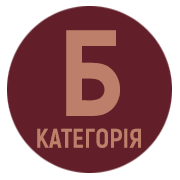THE PROBLEM OF TRANSLITERATION OF DIGRAPHS -L’, -N’ IN UKRAINIAN ONYMS BY THE MEANS OF SLOVENIAN LANGUAGE
DOI:
https://doi.org/10.24919/2522-4565.2024.60.20Keywords:
Ukrainian proper names, Slovenian language, spelling, Slovenian media.Abstract
Summary. For a long time, Ukrainian proper names were transferred to other languages through an intermediary language, that is, Russian. The same trend was observed in Slovenian. Changes in the transferring of the onym space were outlined only after the outbreak of the Russian- Ukrainian war, and especially after February 24, 2022, when Ukraine became the leading topic in the Slovenian media. Almost every news item from Ukraine was accompanied by a large number of proper names. Thus, there was a need, and hence a problem, in their translation. There is no unanimous opinion among Slovenian linguists on this issue, and there are no solid developments in this area, which further complicates the situation with the translation of the Ukrainian onomasticon into the Slovenian language. Therefore, it is not surprising that it is recorded in almost chaotical spelling in Slovenian journalistic sources. A detailed study and systematization of the peculiarities of the transliterating of digraphs -l’, -n’ in Ukrainian proper names in the Slovenian media is presented in this research. For this purpose descriptive, comparative and analysis methods were used. The analysis revealed the following phenomena: a) the presence of doublet forms of most Ukrainian toponyms and anthroponyms (60%); b) all astionyms with the base -pol’ / -pil’ have double spelling; c) sometimes one information source offers two variants of the same proper name (propriative) or proper names (propriatives) of the same orthographic type, which indicates the absence of at least conditional rules for the transliteration of Ukrainian proper names followed by the same information broadcaster. We believe that the rules for spelling of Ukrainian proper names in the Slovenian language require a thorough revision, a clear standardization of the principles of approach to spelling of Ukrainian proper names, which would contribute to the unification of their transmission. At the same time, it should be taken into account that the developed solutions should not lead to a significant deformation of the Ukrainian exonym, which would make it impossible or difficult to recognize.
References
Хороз Н. Написання українських топонімів у словенських ЗМІ 2022–2023 років. Актуальні питання гуманітарних наук. 2024. Вип. 76. Т. 2. С. 183–188.
Dolbovoljc H., Torkar S. Ukrajinska in beloruska imena : uporabiti ruski zapis ali ne? 2021. URL: https://svetovalnica.zrc-sazu.si/topic/5525/ukrajinska-in-beloruska-imena-uporabiti-ruski-zapis-ali-ne (дата звернення : 11.12.2024)
Hočevar M. Angleška zemljepisna lastna imena v slovenskem prevodu angleškega turističnega vodnika po Londonu. Jezik in slovstvo. 1999–2000. Št. 45. S. 294–307.
Petrovčič M. Pregled načinov latinizacije kitajskega jezika in primerjava poglavitnih sistemov. Azijske in afriške študije. 2009. Št. 13. Knj. 2. S. 83–102.
Pogačnik A. Glasovno domačenje lastnih imen iz nelatiničnih pisav. Pravopisna stikanja : razprave o pravopisnih vprašanjih. Ljubljana : Založba ZRC, 2012. S. 73–83.
Pravila I. Slovenski pravopis. Ur. J. Toporišič, F. Jakopin idr., 2001. URL : https://fran.si/134/slovenskipravopis/datoteke/Pravopis_Pravila.pdf (дата звернення : 12.11.2024)
Pravopis 8.0. Komentarji poglavij I-IV. 2022. URL : https://omp.zrc-sazu.si/zalozba/catalog/book/2018 (дата звернення : 14.11.2024)
Stopar A., Ilc G. Domačenje angleškega polglasnika v slovenskem pravopisu. Pravopis na zrnu graha. Razprave o pravopisnih vprašanjih. Ljubljana : Založba ZRS, 2022. S. 181–241.
Uhlik M. Zapis in sklanjanje ukrajinskega imena «Mariupol». 2022. URL : https://svetovalnica.zrc-sazu.si/topic/5744/zapis-in-sklanjanje-ukrajinskega-imena-mariupol (дата звернення : 10.12.2024)



